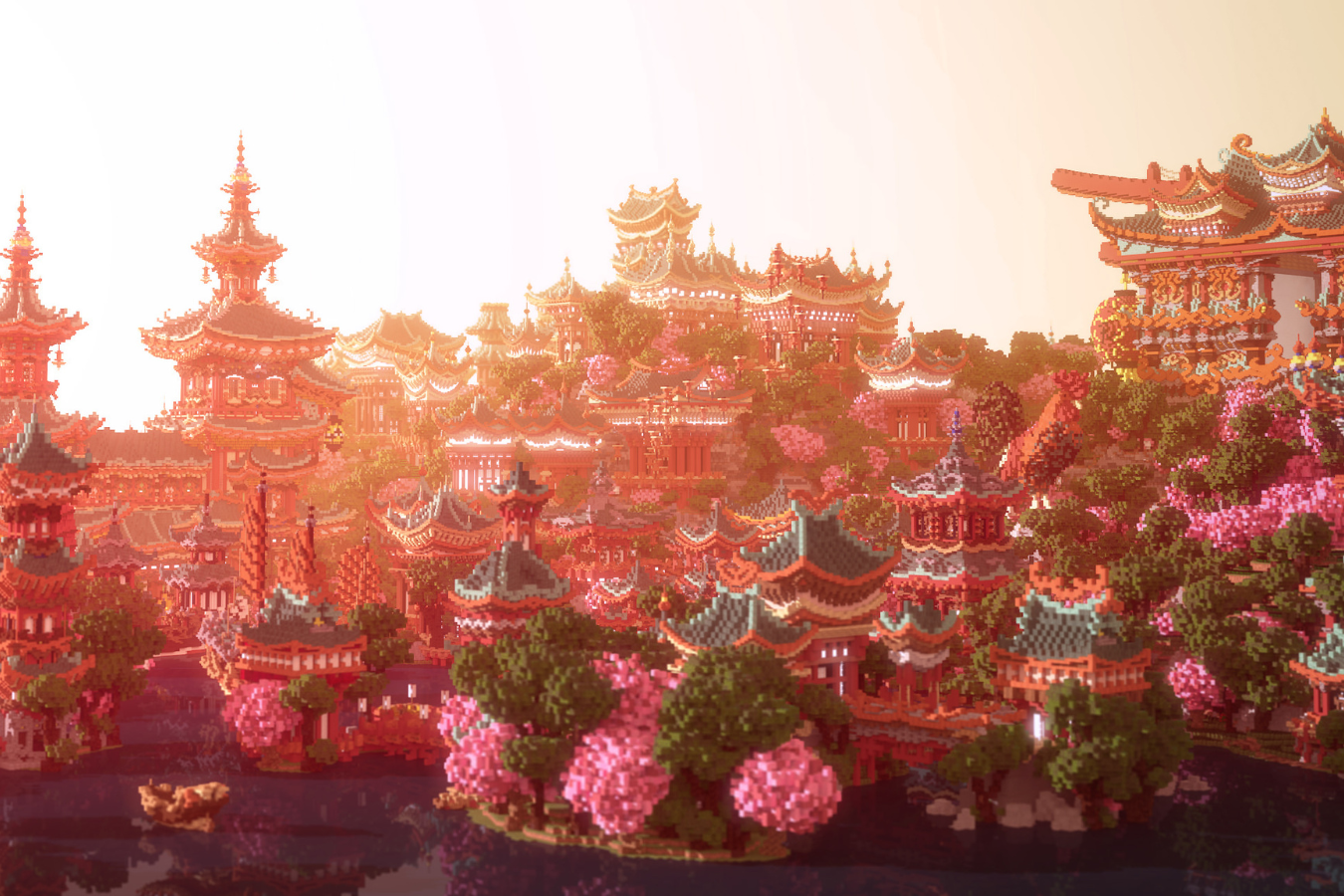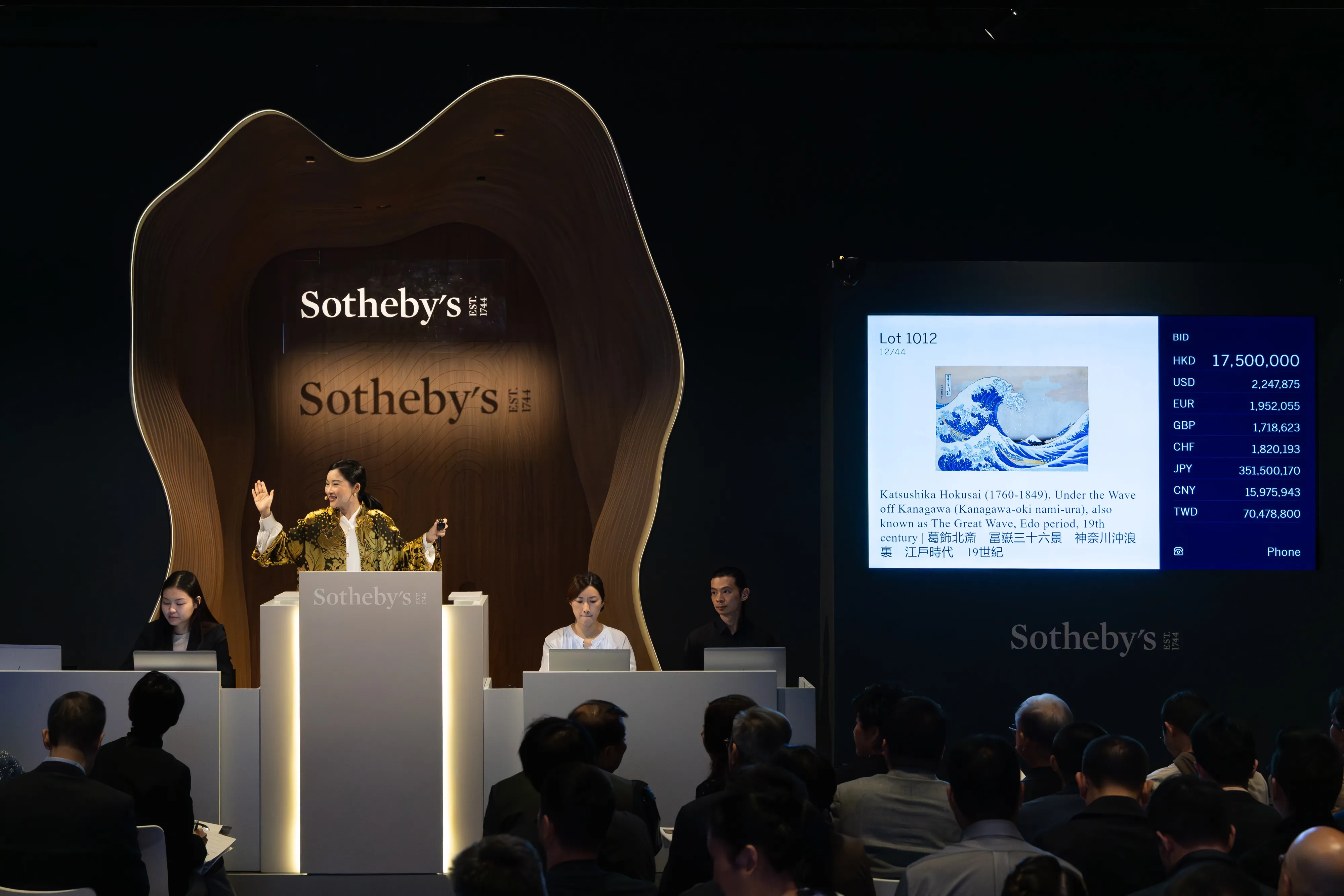Club Seen shines a light on the artists, VJs, and designers providing a visual dimension to after-hours underground culture in urban China.
Fu Tong, aka Sandancunrun, was born and raised in Hubei, a central Chinese province that’s famous for its grueling emphasis on the gaokao (高考, China’s infamous college entrance exam). Her gift in art at an early age led her down a different path — she moved to the east coast city of Hangzhou in her teens to attend a high school affiliated with the prestigious China Academy of Art, later studying new media design at CAA’s Shanghai Institute of Design.
Fu, now 26, works with interactive installations, video, animation, VJing and performance art. Together with artists Xindi and Xuandi, Fu operates TIAN TUAN, an art “brand” that puts on staged, multimedia performance spectacles straddling the conceptual and commercial. Her eclectic list of influences ranges from cult classics like Santa Sangre and Suspiria, to music from artists as diverse as Gary Numan, Opeth and Oneohtrix Point Never.
Related:
 Event: BurgerSuicideClub + TIAN TUAN Live A/V Performance @ ALLAn evening of transgressive art, music, and performance with two distinctive groups from the bowels of Shanghai’s creative undergroundArticle Nov 06, 2019
Event: BurgerSuicideClub + TIAN TUAN Live A/V Performance @ ALLAn evening of transgressive art, music, and performance with two distinctive groups from the bowels of Shanghai’s creative undergroundArticle Nov 06, 2019
TIAN TUAN will perform at RADII’s next live music event at ALL on Tuesday, November 19. Ahead of that, I spoke with Fu Tong about the attraction of performing in club spaces, how she harmonizes commercial and artistic practices, and the stories behind the creation of TIAN TUAN and her more business-oriented company, XFF.

Fu Tong
What were some important Chinese influences on your aesthetic when you were first starting out? Foreign influences?
When I first started out there were so many influences. Cult films like The Love Witch, Possession, Santa Sangre, Phantom of the Paradise, Suspiria (1977); novels like Brave New World; music by Ataxia, Daphni, Venus, Binkbeats, Jamie XX, Floating Points, Gary Numan, Gesaffelstein, Sebastian, Jon Hopkins, La Recre, Mew, Oneohtrix Point Never, Massive Attack, Opeth, Tangerine Dream; Legal Report (今日说法), a true-crime news show; personal relationships. Overall I was more influenced by domestic culture, and more inspired by foreign culture.
Can you talk about your artist alias, Sandancunren? What does it refer to? You also go by Luo Menghan (罗梦含) sometimes — are these two names two different streams of your creative output? How do they differ?
Sandancunren is the pinyin for 三丹寸人, reversed and singled-out radicals taken from the characters of my name, Fu Tong (付彤). I first came up with this name as my username on [messaging app] QQ.
Luo Menghan is a more recent one. I’ve been doing commercial projects lately, and the commercial packaging is make-believe and beautiful. Luo Menghan is a virtual character I’m planning to work on. When I was studying art sometimes I’d really reject the commercial way of doing things. I thought it meant following trends and chasing profits, but truthfully that was just hearsay — I didn’t know the way commercial projects worked. Later on, when I started working, I realized the commercial stuff has a clear standard, it’s a mature industry. So Luo Menghan is a creative persona that follows commercial regulations.
The tension and ever-evolving coexistence between humans, the natural environment, and technology is a constant theme in your work. It can be seen in your college graduation project, KUI, and your recent VR piece, Dragon’s Palace. How do you attempt to address these topics through your art? How do you hope a viewer of your work will come away thinking differently about these subjects?
This probably has to do with the fact that I like being in nature. I believe most people feel drastically different, both mentally and physically, when they enter a natural landscape. Love of nature is something everyone was born with, because that’s our root. Humans and nature have a symbiotic relationship, while technology is a tool that may change this symbiosis.
This symbiosis may form over a long period of evolution, or it might be built and handed down by a higher civilization, as in [the film] Prometheus. I find this fascinating. Recently, there have been many sci-fi stories talking about this topic — my recent favorite is Annihilation. I find the symbiotic state displayed in that film exciting.
Humans and nature have a symbiotic relationship, while technology is a tool that may change this symbiosis
Can you talk a bit about your performance group, TIAN TUAN (天团; “sky group”)? Why do you describe it as a “brand” in the group bio? How would you describe TIAN TUAN’s works?
It’s like the concept of a company: TIAN TUAN is the main part, with many branches. One branch is DI TUAN (地团; “earth group”), which does mostly performance. In the future we’ll also develop other branches, such as a music label, art product lines, a public service branch, etc.
The reason we call it a brand is because I want our art organization to have an industrial system, similar to a commercial brand, so that it can be competitive against commercial giants and influence people’s daily lives. The art we want to create isn’t limited to being put in a museum or an exhibition space. When we set our sights on the whole world, I think we’re more free, and we better understand what it means to create art. The original motive of founding TIAN TUAN was forming an all-female group with Xindi, Andi, Yuezi, Lili and me, hoping that we’ll achieve the influence of a pop girl group.

TIAN TUAN – Fast=Fashion?

TIAN TUAN – Future Baby
TIAN TUAN’s works are still unformed, still being explored step by step. Each performance is a process of trial and error, and each is different. That being said, for now we are focused on themes of gender, emotion, identity, symbiotic states among humans, and between humanity and nature.
A year ago, you founded XFF (玄蝠), “a collective of young artists and hackers… intent on creating unconventional adventures and unique experiences.” The name comes from the two founders’ names, Xuandi and Fu Tong, which sounds like xuanfu (炫富; “to flaunt wealth”). What does it mean to you to “flaunt wealth”? What projects has XFF done in the past year that you think count as “unconventional adventures and unique experiences”?
Yes, the name is a phonetic play on the founders’ names. By using the name xuanfu, we also put a serious note to this jealousy-inducing behavior. Flaunting wealth isn’t the purpose, but to own the wealth that’s worth flaunting is one of the goals we set when we founded the company. I think it’s not shameful nor difficult to make money legally.
We hope we can discover a business model where you can keep both art and commercial projects alive, and you can save money to buy an island one day

TIAN TUAN – Fast=Fashion?
The unconventional part that is reflected in an XFF project is usually due to the limitation of the situation — we have to make up in execution what we lack in money. Our sense of “unconventional” is more about the way we run the company: we hope we can discover a business model where you can keep both art and commercial projects alive, and you can save money to buy an island one day.
As a VJ, you’ve performed at all kinds of venues, from ALL in Shanghai to the “Bird’s Nest” National Stadium in Beijing. You’ve played at many other art spaces and clubs as a live A/V and performance artist as well. What attracts you to doing live performances? What is unique about performing in a club space?
The most attractive thing about performing is, of course, that sense of it being a “live” show. To make everyone focused on one point for minutes or even hours is difficult to achieve, and it creates a massive energy field. It’s different from a crowd standing around and watching — it’s more like a carefully executed scam.
[A live performance] is different from a crowd standing around and watching — it’s more like a carefully executed scam
When you perform in a smaller space, physically you’re closer to your audience, so all the details are exposed in front of everyone and you can’t cover them up. In a big space, it’s easy to create a good audio-visual experience with compelling sound and lighting. In a small space, it’s more about the immersive feelings and details.

Still from VR piece Dragon’s Palace

Future Baby
Music plays a big part in your performances and works. When doing a live A/V and performance art piece, like Future Baby, how do you balance your roles of DJ, VJ and performer? When making a narrative piece such as Dragon’s Palace, how do you go about scoring it?
Music is something I’m really not good at, but when put in the context of contemporary performance art, the incomplete elements make more sense. Shifting roles is a natural process.
I commissioned a friend to do the music in Dragon’s Palace. The work itself was inspired by surrealist Chinese TV shows from the ’80s; the score also samples the theme song from [popular ’80s show] Journey to the West, though the final product turned out a bit awkward.

Are there any musicians/bands that you especially want to work with?
I’ve worked with bands and DJs before, mostly as visual producer. The musician I want to work with the most now is my future self: DJ Luo Menghan.
What are you working on now?
Working on a government project now, it has been the most complicated pitching procedure I’ve ever experienced. I hope I’ll have more time in the future to work on my own projects.
—
Follow Fu Tong on Instagram here, and TIAN TUAN here. If you’re in Shanghai you can see TIAN TUAN perform at RADII’s china.wav show on Tuesday, November 19 at ALL.
More Club Seen:
 Club Seen: The8Immortals Blends Classical Art with Radical CountercultureClassical tradition steeped in performative ritual — Qian Geng draws on Tang dynasty poetry and the folk traditions of northeast China in his provocative calligraphic paintingsArticle Oct 31, 2019
Club Seen: The8Immortals Blends Classical Art with Radical CountercultureClassical tradition steeped in performative ritual — Qian Geng draws on Tang dynasty poetry and the folk traditions of northeast China in his provocative calligraphic paintingsArticle Oct 31, 2019
 Club Seen: Asian Dope BoysChen Tianzhuo’s nomadic club night has shifted its spotlight to local artists and musicians over the last yearArticle Aug 15, 2019
Club Seen: Asian Dope BoysChen Tianzhuo’s nomadic club night has shifted its spotlight to local artists and musicians over the last yearArticle Aug 15, 2019

















